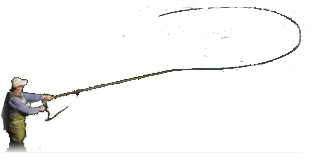-
Paddling in Bays
Seems there is interest in Kayaks so here is some more to think about. I agree that high performance kayaks have little to do with fishing unless you want to get somewhere that is a ways away and the water gets shallow at times. Then a kayak is a great thing. Wide boads (i.e., 24") w/ good initial stability and Swed form huls are ideal. Their hull design creates a wave that hey then surf so they move through the water efficiently at 3.5 to 4.5 knots. If you are going to put on the miles (i.e., 20 in a day) then a good carbon paddle is wonderful. Consider getting a pair of paddling gloves; I like the ones w/ fingers bare as I have a better sense of what the paddle is doing. When planing the rout look at water depth. When the depth is less than 2 feet then their is a rebound effect w/ the bottom that slows down the boat (similar to ground effect in plane). Pay careful attention to hydration. Minimal dehydration results in a lot of energy loss. Nutrition should involve complex carbs and some healthy fats; looking for an even burn w/ no ups or downs. Water and food together are your best protection for hypothermia if imerced in cold water.
The paddle is a lever, push with your upper hand and rotate you body to move the lower hand. This does amazing things to your speed and endurance.
Be sure and check the weather. Wind and lightening are critical. The lightening that kills you comes from the surface of the water, usually using the point of something that conduces. One Million Volt flash coming down can have a thousand, ten thousand volt flashes going up.
Pay close attention to passes going out to the ocean. Currents can become quite strong. The water can become quite dangerous. I have a picture of a 40 food sail boat fliping end for end in one of my sea kayaking texts to emphasiz the point. The whte water folk would call it and ender. I imagine the boad owner did as well.
Sting rays are a problem in shallow water. Shuffle your feet. I met a person who didn't, he was talking about pain that nearly made it possible to drown in 8 inches of water, landing on his back saved him.
My experience is in Texas waters where tides tend to be a couple of feet. Larger tides are larger problems.
Sharks aren't much of a problem in the middle of the day, not much bites in middle of day.
-
do you have any more details on this "rebound effect" in two feet of water?
-
These are great post you are doing, full of knowledge. Thanks
-
Trying to pay back some of what I am getting. Considering doing some on moving water cause I have been surfing waves in my kayak and seen the fish sitting behind the rock causing the wave.
Regarding the rebound effect. Watch the bow of your boat; there is a bow wave coming off either side. There is a similar force pushing water down around the bottom of the boat. If the watter is too shallow then the boat will slow down. Try paddling in deep watter that you know goes onto a shelf that is a foot deep; the boat will feel slower, like you are climbing something. There are some good sea Kayaking books on route finding that will go into more detail, but, being in a boat and feeling it slow down is very convincing. I am told that some of hull design is to make the energy lost when the water is parted be restored to the hull when it comes back to gether.
-
Ground effect in planes can be quite usefull if one needs to extend a glide. Of course, if one is trying to land this can be a problem. Albatrosses are experts at using this and ride it for hours.
